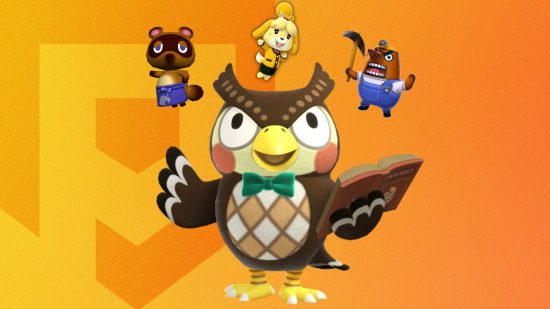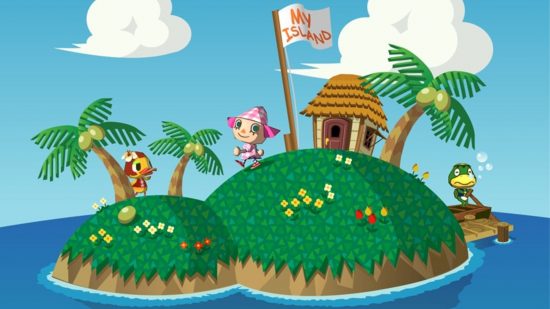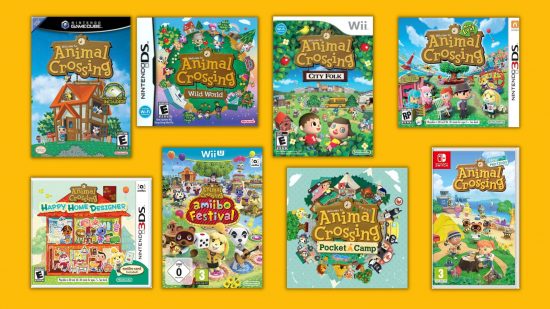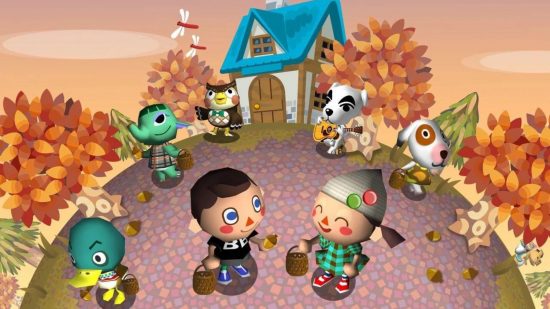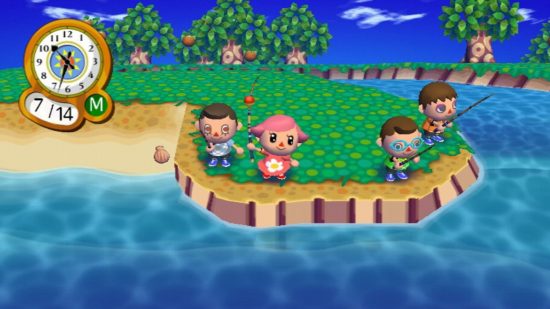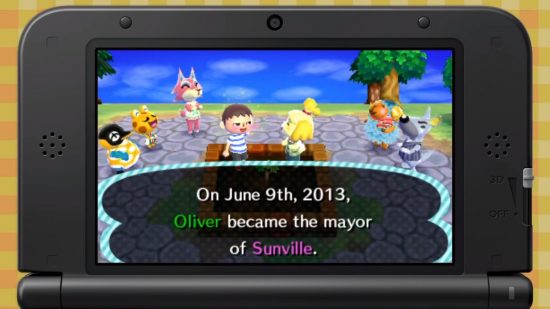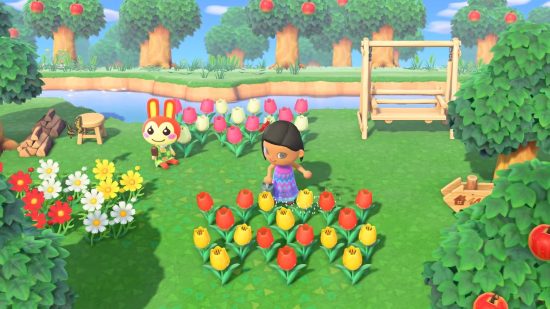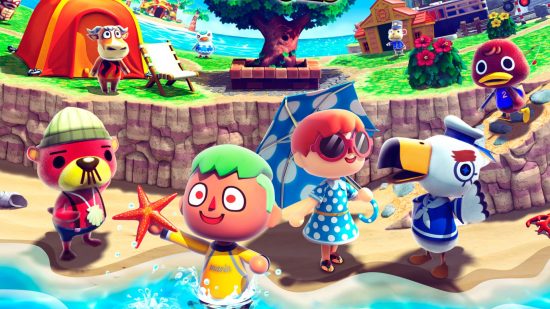I love Animal Crossing, and it’s the best series of games ever – the end. No, but seriously, the friend-filled franchise has always been very popular thanks to its adorable aesthetics and accessibility, providing players with a relaxing and rewarding time whenever they delve into their towns.
To save this from being a literal novella on just “Why I love Animal Crossing,” I’m not covering every nook and cranny of every game, but all the important bits are in here. Whether you’ve been here since the very start or discovered the joys of Animal Crossing in 2020 during the lockdown, I’m here to give you a quick rundown of the franchise’s history and educate you on its beginnings.
For those who may not know, here’s a brief summary of Animal Crossing and what it brings to the table. It’s a slow-paced, relaxing, and very wholesome life simulator featuring your character moving to a different area to start life anew.
Animal Crossing runs on a real-time clock, meaning there are different things to do no matter when you head into your towns, all the while followed by delightful music that changes every hour. You, as the sole human character, step out of a train, plane, or automobile into a town inhabited by animals who warmly greet you and usually explain that you’re now in charge of the town and, surprise, it’s now your day job to keep things running (in the later games, at least).
In the first couple of games, you had to head straight to Tom Nook and get yourself a job in order to pay off your debt – a paltry sum of a couple thousand bells – to secure your house. Working for him involves planting flowers, delivering orders, and writing a catchy advertisement on the town’s signboard. Let’s be honest. Very few of us actually made it appealing. At the end of the day, you receive a bag of bells, the monetary currency in the franchise.
When the work day finishes, the town is your oyster. Purchase some tools like a fishing rod, net, or shovel, and go hunting for the naturally occurring flora and fauna to fill out your encyclopedia, and don’t forget to donate one of each thing to the museum. Here, Blathers the owl eagerly awaits your donations with open wings. Except bugs – he’s scared of them, but does his duty to science and accepts them anyway.
While not stuffing the museum with new fish, fossils, and insects, you can go shopping at the tailors or Nook’s barely stocked emporium, head out for a chat with the locals, or even catch a show by K.K. Slider the musician if he’s in town.
Over time, flowers and trees grow, and more villagers move in for you to make friends with. You can spend weeks crossbreeding flowers and building up a blooming paradise by installing benches or bridges or decorating by placing patterns on the ground. Of course, you don’t have to make your town pretty. You can, if you really want, let it fall into ruin and let the weeds take over – perhaps you’ll find a stinky rafflesia flower spewing flies all over the place.
So, where did Animal Crossing come from? It may not have its roots as far back in Nintendo’s history as Mario or Donkey Kong, but like Pikmin, it’s a product of the new millennium. Animal Crossing made its debut, first appearing on shelves in April of 2001.
Originally titled Animal Forest, the project was a labor of love from Katsuya Eguchi and Hisashi Nogami, who had the 64DD peripheral of the N64 in mind – which lent some ideas to the franchise, like the real-time clock. The 64DD edition didn’t quite come to fruition, though, so Animal Crossing came to the N64 instead.
Eguchi’s inspiration for Animal Crossing came from a fairly sad place. He used his experience with loneliness after moving to an entirely new city for work to form the franchise, where you make it on your own and find some fantastic friends right on your doorstep. Or not, if your town has cranky villagers, as they will shout at you in older games.
It’s also important to note that while the newer games allow you to play with people via the internet, since day one, Animal Crossing allows more than one user to enjoy the game using the same town – either with their own houses or sharing a loft bedroom. Togetherness truly is the heart of Animal Crossing.
Upon release, the N64 game sold out completely, but as Nintendo was heading towards the GameCube era, it decided to essentially port the game to the Cube to allow more players into Animal Crossing, as creating N64 cartridges was a longer process.
The game started to gain real traction with the localization of Animal Crossing: Population Growing in the US and Europe in 2002 and 2004 respectively. This was an enhanced version of the N64 title, as a lot of specific Japanese aspects got taken out and replaced by Western-friendly holidays or manners of speech, though Japan got yet another edition – Dōbutsu no Mori e+ – in 2003 with even more content packed into it.
These differences inspired the later games in that the encyclopedias of bugs, fish, and fossils were an amalgamated list of worldwide items, not specific to any area so as to not alienate any players.
From there, Animal Crossing took over the handheld consoles. Wild World came out on the Nintendo DS a year after the console’s debut in 2005 – but Europe had to wait another year for the game to make its way across. Though Wild World had a little less content than its predecessors due to being on a console with smaller capabilities, being on a handheld meant you could play it whenever and wherever you please, along with adding local multiplayer for friends to visit your town (and steal your hard-earned coconuts).
Fun fact, there’s an official Animal Crossing animated movie that came out around this time too, which, if you haven’t seen it, I highly suggest watching it. It’s based primarily on Wild World and is an adorable little romp, though it only ever came out with a Japanese dub.
Wild World placed players into a new town, where Tom Nook immediately harangues them into paying off their apparent house debts. Fish, catch, dig up items to sell, and shake those trees for Bells at Tom Nook’s shop, and soon enough, you own your own property.
Other than your ever-increasing mortgage, there aren’t many pressing commitments in Wild World – you just live a relaxing and cozy life surrounded by walking, talking animals… and being lectured by Resetti when you forget to save, and your DS runs out of power. The reason he’s so tame in New Horizons is likely due to how many children were genuinely scared of his appearances in the game.
The DS game is just very nice (Resetti not included). It encourages you to take life slowly and appreciate the small things like watering flowers or delivering a letter by hand.
A couple of years later, we got Animal Crossing: City Folk/Let’s Go to the City in 2008 on the shiny new Nintendo Wii. City Folk’s premise is very similar to Wild World but adds a small city to explore with a theater, auction house, and Kicks the shoemaker. Armed with a new credit card, the need to make a stack of Bells becomes even more important. Thankfully, City Folk’s town is a little larger, so you have more space to play and hunt down your next paycheck.
The Wii game makes use of motion controls and online multiplayer options, making it that much easier to ransack each other’s town and hit each other with nets at any time. It was also the first game to use the Wii Speak attachment, allowing players to chat via the console itself.
The next game took a huge leap in the right direction. In 2012, Animal Crossing: New Leaf changed up the formula just a little but added enough new systems and things to do that it made the Animal Crossing name more popular than ever before. And that was before the hefty Welcome Amiibo update in 2016 that brought in the use of amiibo cards, along with plenty of new content.
New Leaf saw you take on the title of ‘mayor’ in the town you land in, whether you like it or not. Through some miscommunication, the animals are eagerly expecting you, and you’re now in charge. Congrats? You can still spend your days fishing, furnishing your house, and planting flowers, but now also enact policies that change the opening hours of the town’s businesses or keep it looking pretty when you’re away for the day. Also, you can build plenty of items outside – a first in the series.
New Leaf is one of the best games on 3DS and is the best Animal Crossing game, hands down. On top of your usual daily chores, there were minigames to play, more shops and businesses to unlock and expand, along with Tortimer’s Island – an area visitable by boat where you and your friends can run around and play games together to win special prizes.
One of the best parts of New Leaf is the furniture based on other Nintendo IPs, available by scanning other franchises’ amiibo figures. You can deck your house out with Splatoon items, including a Splash Wall, key Legend of Zelda items like the triforce, and even Monster Hunter furniture. This is, sadly, missing from New Horizons. Sure, we got some Mario warp pipes, but Pikmin 4 and Splatoon 3 have come and gone with no items in Animal Crossing. Sad, really.
Following up on New Leaf’s success is Animal Crossing: Happy Home Designer in 2015, a spin-off letting us decorate villagers’ houses and public buildings how we see fit at the behest of Lyle and the Happy Home Academy, a company that essentially judges how nice your personal houses look in the mainline games. Happy Home Designer did have a little crossover with New Leaf, where you can unlock special furniture at the Nookling Junction shop.
The game didn’t score too well in most reviews, likely due to the lack of exploration or communication with NPCs, but if you like decorating, then oh boy, is it the game for you. Hours were spent picking the best wallpaper for Zucker’s house and which sofa Wolfgang might like.
Right, let’s talk about the elephant in the room – and I don’t mean Big Top the villager. It’s Animal Crossing amiibo Festival. Everyone expected great things from the Wii U. Perhaps a new mainline Animal Crossing title? Alas, it dashed all our hopes in one fell swoop.
It’s set out like a board game, and you roll a dice, move that amount of spots, then take part in cute minigames as you go with up to three other players. The game is fun for a couple of rounds. It just isn’t what anyone asked for. You do need at least one amiibo figure or card to play the game, and let’s be honest – the fact that the game came with Digby and Isabelle figures was the entire selling point. Speaking of amiibo, Animal Crossing’s first figure came out in 2014, but the NFC cards have been around much longer – since the GameCube era, in fact!
Now, I do think Amiibo Festival is cute, but that’s all we got for the console in terms of an Animal Crossing game, and it was a laid-back party game. Sadly, it didn’t come close to Mario Party’s levels of popularity. To sum up, here’s what our own Nathan has to say on the matter:
“Ah Animal Crossing: Amiibo Fest. At a time when desperate Nintendo fans were begging for an HD Animal Crossing game on the WiiU, Nintendo decided to create the most painfully dull and slow virtual board game known to man. A true test of Animal Crossing fans’ commitment to the series, I’m not sure Amiibo Fest could have been fun if you replaced the characters even with the secrets to endless money and eternal life.
Apart from being a painfully simple game of moving around a board, Amiibo Fest also features some very simplistic ‘games’ that even a toddler will get bored of within a few rounds. Add the fact you need to pass around the Wii U gamepad between players and tap your little amiibo figure every time you move, and the whole endeavor is as much fun as a Ted Talk hosted by Mr. Resetti. A stark low point in a series where even the spin-offs are normally fun, I paid $5 for the game with two amiibo figures, and I still feel ripped off.”
Anyway, moving swiftly on to greener pastures, 2017 redeemed our opinions a little as Nintendo made Pocket Camp for mobile devices. It’s still going and still worth playing, as it has had consistent updates including newly added clothing, furniture, and features.
As the name suggests, the game centers around the use of camper vans, where animals park up in a few different locations where you can talk to them and schmooze them into hanging out at your own specific camp. You can head to the shore to catch fish and bugs or head into the central plaza to visit Timmy and Tommy’s shops or buy some new clothes. It’s essentially a simplified version of New Leaf, and to be completely honest, it has way better clothing and furniture options than even New Horizons.
In true mobile game form, there are tons of microtransactions available, but you can easily play without purchasing a myriad of premium currency bundles, plans, or fortune cookies. Some may not enjoy the fact it is a mobile game, but I’ve spent plenty of hours in the mobile game and do recommend it for those who are fans of the series. Lord knows its all we had to fill the void for a few years.
Nintendo released the Nintendo Switch console in 2017, but there was no Animal Crossing in sight. It took three years for us to get there. In 2020, the Switch got Animal Crossing: New Horizons, albeit delayed from an original release date scheduled for 2019. The announcement trailer fooled us all completely – all the lead-up and hints in a 2018 Direct gave us Isabelle coming to Smash, and our expectations fizzled. Then… fade to black. But, oh, what’s this? Oh my god, it’s Tom Nook watching the same trailer at a desk! He announces he has much work to do, yes, yes, and that we’re getting a new Animal Crossing game. Cue ugly tears of happiness.
Nintendo, by delaying the release just a few months, unintentionally made what I think is the best business decision in history. Animal Crossing: New Horizons came to Switch on March 20, 2020, just six days before the UK was thrust into a nationwide lockdown, joining the rest of the world as the COVID-19 pandemic swept the globe. This meant record sales numbers – currently standing at over 42 million copies sold – as we all rushed to online retailers to snag a copy and then spent an ungodly amount of hours decorating our new virtual homes.
New Horizons places the player as the representative on an empty island, save for a load of trees and two villagers, as they embark on Tom Nook’s getaway package. The entry has more multiplayer functionality than ever before and brings in game-changing mechanics like being able to place furniture anywhere, pick where villager homes go, and being able to pick who moves in. Revolutionary. Truly incredible.
The release of Animal Crossing: New Horizons, as delightful as the game is, left some older fans of the franchise with a bad taste in their mouth. Some things are seriously lacking despite being present in past games – where are my banana trees, Nintendo? What happened to Tortimer? Perhaps most importantly, where are the further upgrades to Tom Nook’s shop?!
Granted, the Switch game is already huge – I have over 900 hours in it myself – it still felt a little hollow around the edges, especially when any and all ‘threats’ didn’t reappear. Gone are the days of having a villager move into a random place on your island, or having your favorite neighbor move out when you least expect it – no, now the only real threat is bees spilling from a dropped hive. Look, I just miss Dr. Shrunk’s wacky stage show and even Gracie’s overpriced clothing.
New Horizons did fix some issues the franchise had, though. Though Pocket Camp was the first to do it, New Horizons allows players to pick their skin tone instead of having to run around in the sun for days on end in order to get a tan and be anything other than pale. Plus, New Horizons gave us the ability to terraform our island, allowing much more personalization and giving us access to all areas more easily than ever before.
After a few small content updates bringing seasonal items and some snazzy Mario-themed furniture, Nintendo announced the Happy Home Designer-like DLC, Happy Home Paradise. This gave another island to investigate along with a massive update to the furniture catalog and gave you free rein to design villagers’ homes as part of a new job working with Lottie, Wendell, and Niko, the Paradise Planning team. This was, sadly, the end of support for New Horizons, as Nintendo announced soon after that they were not adding any more content to the game, further adding to some player’s distaste.
And now here we are in 2023, with a roster of over 400 villagers and tons of recognizable and loveable NPCs roaming our island. As for the future of Animal Crossing, who knows? Nintendo recently announced two new Switch Lites featuring New Horizons pre-installed a smattering of nook leaves on the back and a rerun of their aquarium event in real life. Could this be a last push before the Switch 2 release date? Or a sign of an Animal Crossing resurgence? After all, it did take four years for New Leaf to get a hefty update…
It might not be the place to say it, but Animal Crossing’s wholesome vibes and constant playability have given my life light many different times. While struggling in school, I had Wild World to come home to, and at uni, I had New Leaf to keep me company (aging myself a bit here), and New Horizons to keep me sane during the 2020 lockdown. I hope it did the same for you and continues to do so in the future whenever it may be that we get a new game.
Perhaps you’re inspired to get some more Animal Crossing amiibo cards? Our guide can help you figure out which Animal Crossing villagers you’re missing, or our list of the best Animal Crossing plushies might find a new decoration for you.
